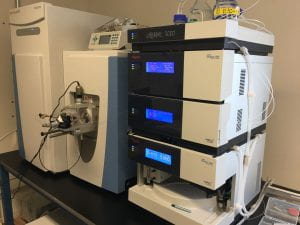Plant proteomes and PPDB. Proteins carry out cellular metabolic, regulatory and structural functions. Therefore understanding the protein composition of cells and subcellular compartments, the proteome, is essential to understand biology. Proteomes can be identified and quantified using modern mass spectrometry, when combined with genome sequencing and bioinformatics. The van Wijk lab is using mass spectrometry (nanoLC-QExactive) as a key tool to characterize plant and chloroplast proteomes, protein-protein interactions, and protein up-and down regulation, as well as proteolysis. To that end we use a variety of biochemical techniques such as cross-linking and N-terminal labeling with stable isotopes. We established the Plant Proteome Database (PPDB) in 2006 which serves to display proteome information for Arabidopsis, maize and rice (Sun et al., 2009). As part of the PPDB, we identify and annotate plastid/chloroplast proteins based on experimentation, bioinformatics including co-expression networks, and curation of literature (see e.g. Huang et al 2013)



